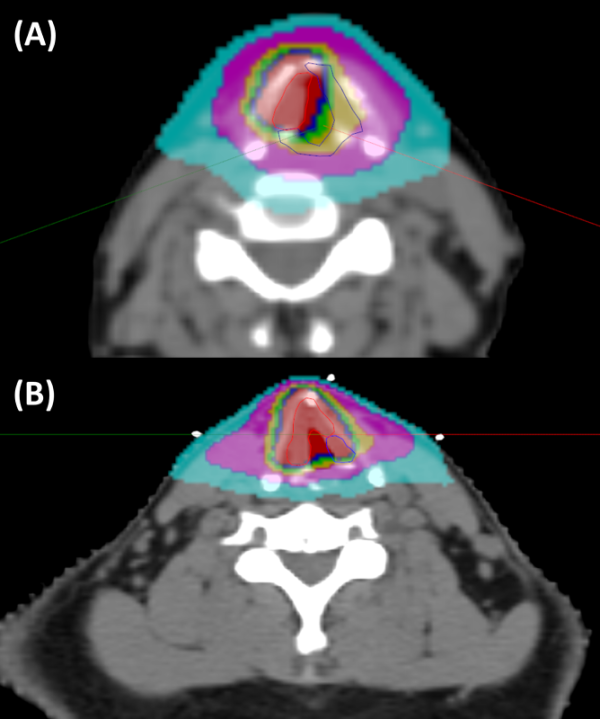Hypofractionated radiotherapy for early stage glottic cancer: efficacy of 3.5 Gy per fraction
Tae Hoon Lee,
Korea Republic of
PO-1119
Abstract
Hypofractionated radiotherapy for early stage glottic cancer: efficacy of 3.5 Gy per fraction
Authors: Tae Hoon Lee1, Joo Ho Lee1, Seong Keun Kwon2, Eun-Jae Chung2, Hong-Gyun Wu1
1Seoul National University Hospital, Department of Radiation Oncology, Seoul, Korea Republic of; 2Seoul National University Hospital, Department of Otorhinolaryngology-Head and Neck Surgery, Seoul, Korea Republic of
Show Affiliations
Hide Affiliations
Purpose or Objective
The purpose of this study was
to evaluate the treatment outcomes and toxicity profile of patients with early
glottic cancer who underwent hypofractionated radiation therapy (RT) with 3.5
Gy per fraction.
Material and Methods
A retrospective review was
performed of the medical records of 35 patients with early stage (T1-2N0M0)
glottic cancer who underwent definitive RT. The dose fractionation scheme was
59.5 Gy in 17 fractions. The posterior commissure was excluded from the
clinical target volume (CTV) for 26 (74.3%) patients without glottic lesions
close to this region. Examples of radiotherapy plan are illustrated in the
following figure (panel A, posterior commissure included in CTV; panel B, posterior
commissure excluded from CTV).

Results
With a median follow-up of 16.23 months (range, 6.82 to 67.15 months),
no local, regional, or distant recurrence was reported. Acute hoarseness
(65.7%), mucositis (68.6%), radiation dermatitis (60.0%) was frequent. One
patient (2.9%) reported grade 3 acute toxicity (mucositis) and there was no
grade 4-5 acute toxicity. There was no grade ≥3 late toxicities; however, grade
1 late intermittent hoarseness was frequent (45.7%). The receiver operative
characteristic analysis revealed that mean hypopharyngeal dose was predictive
for acute grade ≥2 mucositis (area under the curve 0.9314, 95% confidence interval
0.8524–1). The optimal threshold of mean hypopharyngeal dose for occurrence of
acute grade ≥2 mucositis was 26.31 Gy, with a specificity and sensitivity of
83.3% and 88.2%, respectively.
Conclusion
Hypofractionated RT with
fraction size of 3.5 Gy for early glottic cancer is safe and effective. The
hypopharyngeal mean dose could predict the occurrence of grade ≥2 acute
mucositis. The posterior commissure can be safely excluded from the CTV.